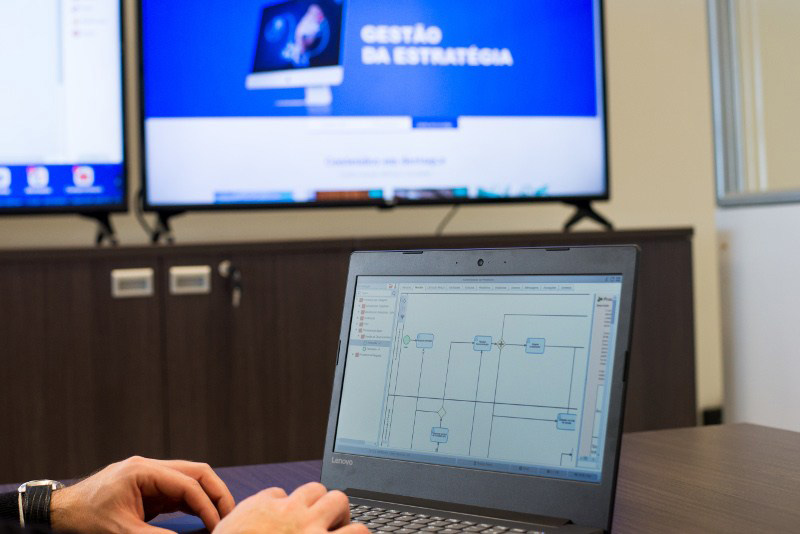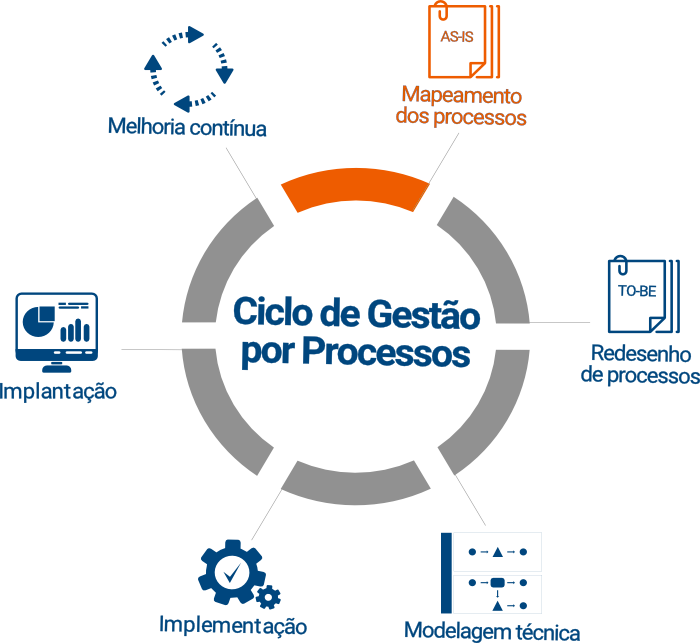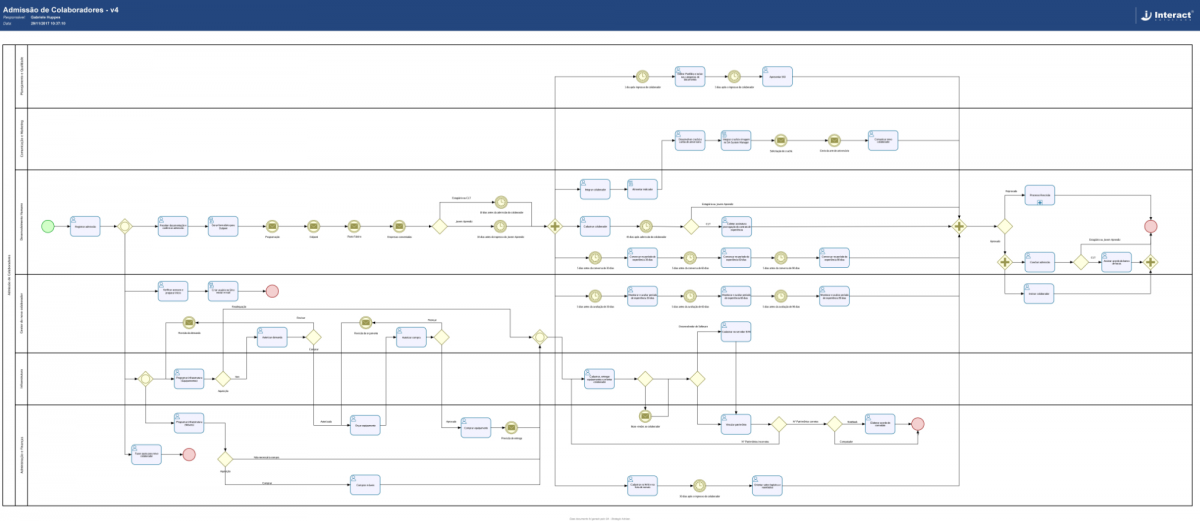
An organization’s processes must be as independent as possible. Imagine a situation in which, for whatever reason, an employee needs to be absent from work. Activities must follow their flows, no matter who performs them.
This is one of the principles of BPM (Business Process Management), as we saw in the case of Interact’s automated admission process. As a definition, Gart Capote (2011: 48) [¹] conceptualizes it in his book Guide for Training Process Analysts as:
A disciplinary approach to identify, design, execute, document, measure, monitor, control and improve business processes, whether automated or not, to achieve consistent results and aligned with the organization’s strategic objectives.
In this sense, the Process Management Cycle is the way to map, improve and automate the processes of a company. To this end, we present in this article 6 steps to optimize the activity flows that make up your organization.
1 – Process mapping
The first step in the Process Management Cycle is to map the current situation. For this mapping, a documentary (involved documents) and methodological (ways of carrying out the activities) survey must be carried out in order to outline the process in detail.
Thus, the AS-IS modeling (current process situation) must contain:
- a) definition of the process,
- b) detailed activities,
- c) people involved,
- d) steps documented or subject to documentation. Also read 6 tips for efficient document management.

Some tools for mapping the process:
- a) application of questionnaires,
- b) on-site observation of the process,
- c) individual interview with each employee,
- d) group meeting to survey the process.
Each case is different. Often, organizations operate without reflecting on their processes. In others, they don’t even know that they actually exist. In any case, this step is essential to formalize the current scenario, as well as to identify and prioritize problems to be addressed.
2 – Process redesign
With the current situation mapped, the second step is to redesign the process. Of course, TO-BE modeling is more analytical than descriptive. The aim is to jointly identify points for improvement.

These two steps integrate the CYCLUS method [²], developed to be used in the continuous improvement of processes through collaboration. With the textual and visual description of the current process (AS-IS), participants evaluate a new version to eliminate problems encountered (TO-BE).
Among the main objectives of the process redesign are:
- a) avoid rework,
- b) standardize activities,
- c) automate what is possible,
- d) exclude unnecessary activities,
- e) improve communication between areas,
- f) establish responsible people throughout the process.
3 – Technical modeling
Technical modeling consists of graphically drawing the flow of activities in the process. For this, the BPMN (Business Process Model and Notation) notation technique is used. This is a popular way of transcribing processes, with the respective steps represented by symbols.

BPMN has five basic categories:
Flow Objects
Main graphic elements, used to define the behavior of the process. They are divided into Activities (work performed), Events (occurrences) and Entries (deviation points).
Data Objects
They are represented by four symbols: Data Objects, Data Inputs, Data Outputs and Data Stores.
Connection Objects
As their name suggests, they connect Flow Objects with each other or with other information. At BPMN, they are responsible for the sequence of activities and for the entire process flow. The Connection Objects are three: Sequence Flows, Message Flows and Associations.
Rays
They are used to group modeling elements. Streak (swimlane, in English) is the term used to represent Pools and Lanes.
Artifacts
Providers of additional information about the process. Technically, BPMN comprises two artifacts: Groups and Text Annotation. However, modeling is free to define or create your own artifacts.

4 – Implementation
This is the phase of automating the mapped, redesigned and modeled process. In addition to automation, the Process Management solution works with the integration of areas and systems of the organization. Interact’s BPMS (Business Process Management Software) SA Process Manager supports several processes, both support and main.

Discover the success story with the SA-BPM module of the Universidad Tecnológica Indoamérica, Ecuador
5 – Deployment
With the process aligned to the system, it’s time to run tests. In this phase, the Process Management cycle enters into approval. The aim is to execute, monitor and manage the flows until they reach the ideal standardization to continue in operation.

In some cases, the ideal is to let the process run for at least a month. This time will highlight gaps and possible problems not previously identified. If it doesn’t work out on the first try, don’t despair. The principle of the Process Management Cycle is the basis of the scientific method: test and error.
6 – Continuous improvement
After completing the previous five stages, the Process Management Cycle enters one of the most important periods: continuous improvement. This phase will be revisited periodically from now on. The objective is to analyze the results of the progress of the process and work on improving it.

Process Management must be cyclical. The circular graphic format seeks to translate these returns to the process in order to update it. Discover Interact’s Process Management solution, adaptable to different scenarios with the advantage of offering automation in most organizational processes.



